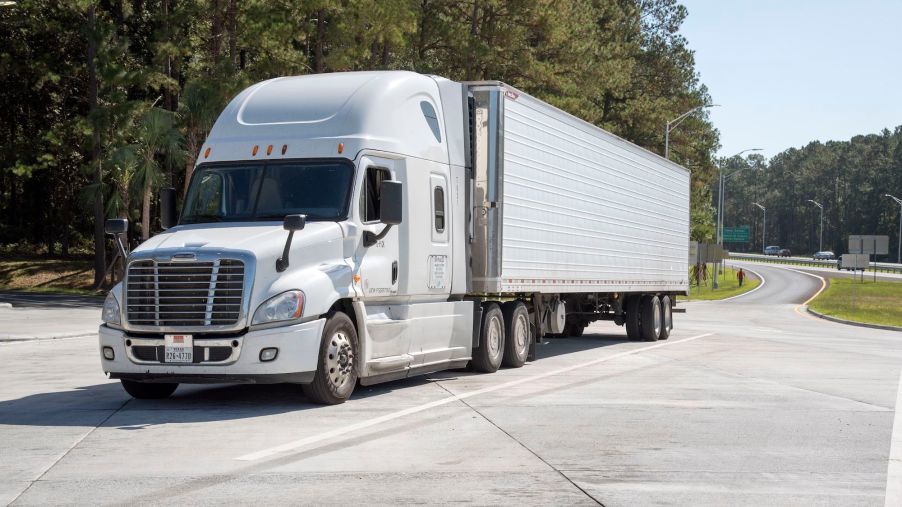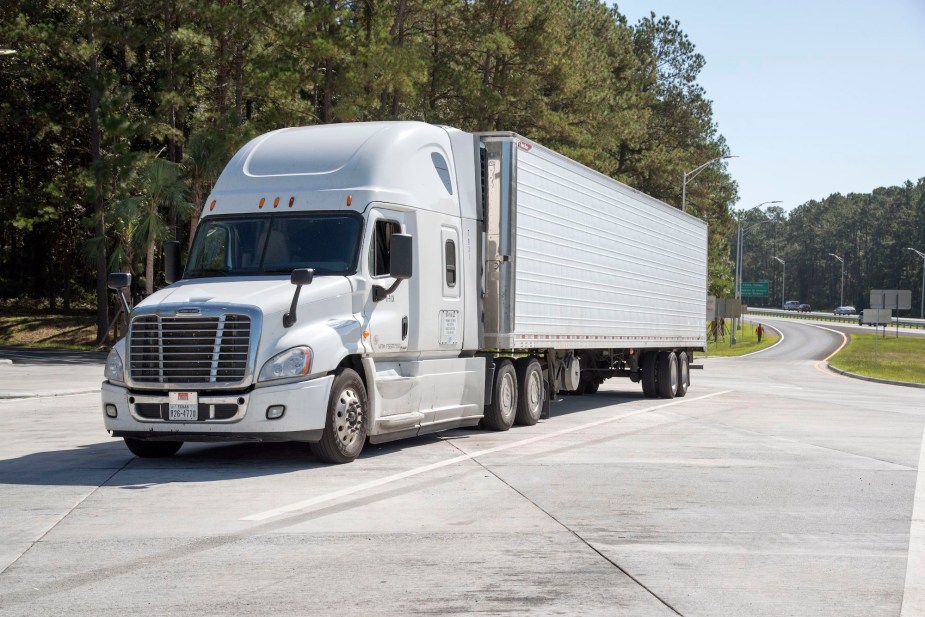
Where Do Truck Drivers Sleep?
We rely on large transport trucks and truckers for so many things. This became even more apparent after the pandemic occurred. Truckers were working overtime to deliver goods to stores and to our homes, which in turn led to a nationwide trucker shortage.
Even before that, truckers have always faced a lot of stressors on the job. After all, some of them work 14 hours a day. Where does a trucker find time for sleep and self-care routines?
Being a trucker can be rewarding but challenging

Truck driving can be a dream job for someone who loves to drive, see the open road, and doesn’t mind their alone time. However, Business Insider says that as many as 30% of truck drivers feel that this isolation is a negative factor. Some truckers have minimal time to be with their families, and many go months without physical contact.
Truck drivers are also considered at a higher risk of unhealthy habits. 69% of truckers are obese because their diets rely heavily on fast food from rest stops. 14% of truckers have diabetes, and half of them smoke cigarettes.
To make matters even worse, 38% of truckers don’t receive adequate healthcare coverage from their employers. While some people can be overweight and still relatively healthy, truckers also sit in one spot for many hours a day. Their eyes and brains are the only parts of their body that get significant exercise.
In addition to diabetes, lack of physical activity can cause high cholesterol and even lead to chronic heart disease. These ailments can be difficult to manage properly without good health insurance.
How does a trucker sleep?
Even with all those risk factors, there are ways to keep yourself healthy as a truck driver. One of those is to get as much sleep as possible.
CloudTrucks says truckers must take 30-minute breaks if they’ve been driving longer than 8 hours. If they’ve been working over 11 hours, current regulations require truckers to rest for 10 hours.
All long-haul drivers and most truckers who don’t return home at the end of the day have sleeper cabs in their trucks. It’s a little room behind the driver’s seat, furnished with a bed and shelving or storage cubbies. A power inverter is also usually allowing drivers to charge their phones while they rest.
Sleeper berths usually have bunk heaters for the winter months or an auxiliary power unit to use the truck’s AC system. Some of these sleeper cabs are even equipped with refrigerators and television sets. If there are two drivers in one cab, the sleeper cab has bunk beds.
While sleeping, drivers often park their trucks at truck stops or a common rest area on the interstate. Technically, they can also park on the side of the highway, but this isn’t always the safest option. Long-haul drivers rarely sleep in hotels because their employers wouldn’t cover such expenses.
What about showering?
Unfortunately, even the fanciest sleeper cab isn’t equipped to have a proper shower. Nowadays, many truck stops will have clean, updated showers for truckers to use while on break.
They usually cost at least $5 per use, but it’s possible to enroll in rewards programs and get the occasional freebie. There are also no functioning toilets inside sleeper cabs, but most establishments won’t begrudge a truck driver for using the facilities.
Good hygiene and a good night’s rest are important for everyone, but these things are absolutely essential for a truck driver. Without enough rest, fatigue can set in and cause them to make deadly mistakes behind the wheel. It might not be luxurious, but it’s nice to have a quiet retreat conveniently located in the truck.


